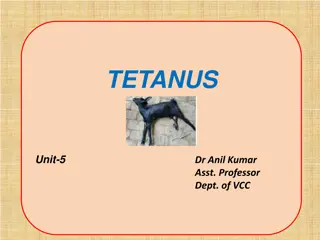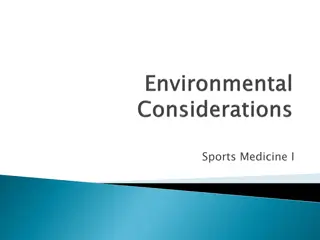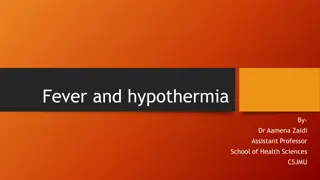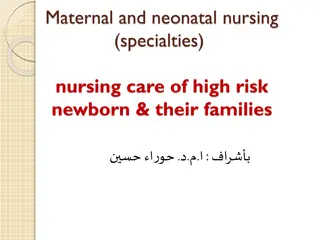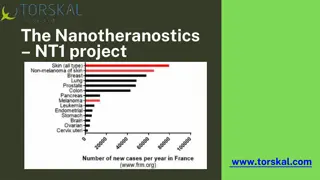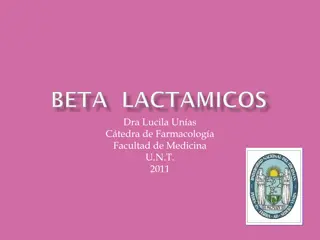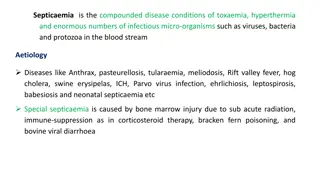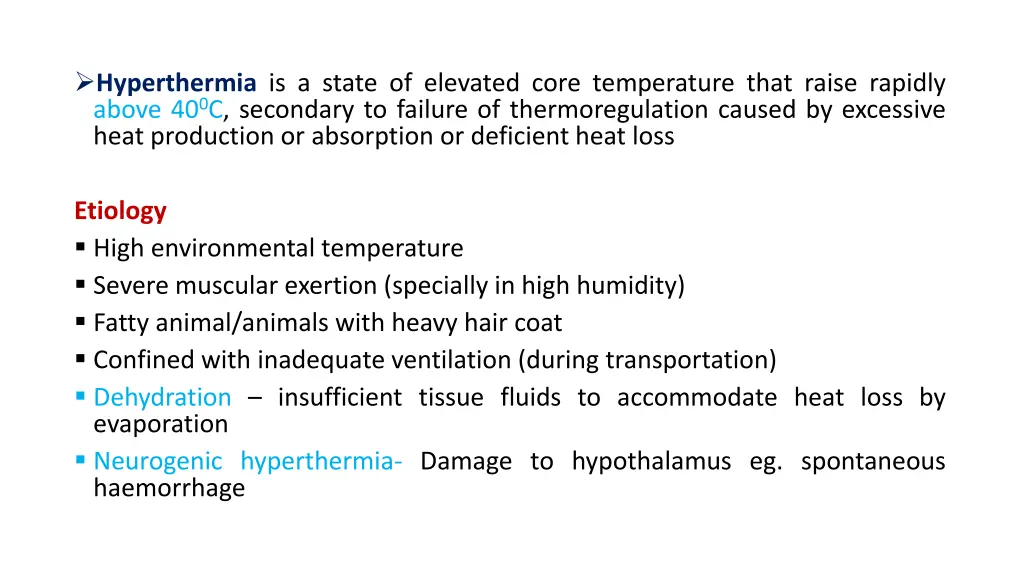
Understanding Hyperthermia in Animals
Hyperthermia is a condition where an animal's core temperature rises rapidly due to various factors such as high environmental temperature, exertion, and inadequate ventilation. This article covers the etiology, pathogenesis, clinical signs, and treatment of hyperthermia in animals.
Download Presentation

Please find below an Image/Link to download the presentation.
The content on the website is provided AS IS for your information and personal use only. It may not be sold, licensed, or shared on other websites without obtaining consent from the author. If you encounter any issues during the download, it is possible that the publisher has removed the file from their server.
You are allowed to download the files provided on this website for personal or commercial use, subject to the condition that they are used lawfully. All files are the property of their respective owners.
The content on the website is provided AS IS for your information and personal use only. It may not be sold, licensed, or shared on other websites without obtaining consent from the author.
E N D
Presentation Transcript
Hyperthermia is a state of elevated core temperature that raise rapidly above 400C, secondary to failure of thermoregulation caused by excessive heat production or absorption or deficient heat loss Etiology High environmental temperature Severe muscular exertion (specially in high humidity) Fatty animal/animals with heavy hair coat Confined with inadequate ventilation (during transportation) Dehydration insufficient tissue fluids to accommodate heat loss by evaporation Neurogenic hyperthermia- Damage to hypothalamus eg. spontaneous haemorrhage
Hyperkalaemic periodic paresis in horse Fescue toxicity (Neotyphodium coenophialum toxin) in ruminants and horses Administration of tranquilizing drugs to sheep in hot weather Specific mycotoxins e.g. epidemic hyperthermia by Claviceps purpurea and Acremonium coenophialum Malignant hyperthermia in the porcine stress syndrome
Pathogenesis Increased Ambient temperature Increased metabolism and muscular activity Hyperthermia Death (Respiratory failure) Peripheral vasodilatation Multi-organ failure Increased gut epithelial membrane permeability Fall in blood pressure Decrease in Cerebral blood flow Cardiac blood flow Gut blood flow Renal blood flow Brain damage Circulatory failure Digestive failure Renal failure Release endotoxin
Clinical signs The first observable clinical reaction when temp. exceeds 39.50 C (1030F)- Increased thirst Most cases temp. exceeds 420 C (1070F) may reach upto 43.50 C (1100F) Increased heart and respiratory rates with weak pulse of large amplitude Respiratory rate above 70 beats/min indicates heat stress Laboured, shallow and irregular respiration The pulse becomes very rapid and weak Sweating and salivation- initially followed by marked absence of sweating (anhidrosis)
The animal seeks cool place Animal may be restless but soon become dull, stumbles while walking and tends to lie down Abortion in pregnant animals Death in most of the species when the core body temp. exceeds the normal value by approximately 5 0 C (80F) Clinical pathology Horse- typical hyponatraemic dehydration and azotaemia Necropsy findings Vasodilatation Slow and incomplete blood clotting Early rigor mortis and putrefaction No constant or specific histopathological changes
Treatment The presence of adequate drinking water together with shade and proper ventilation Affected animal should be immediately placed in shade and hosed on the midline of the back Fans should be placed in front of the animal to enhance evaporation and cooling Cooled water, with or without water Placement of wet sheets or towels over the head or neck is not recommended as they provide unneeded insulation Intravenous fluid (0.9% NS) administration Cold water enema In very severe cases of hyperthermia, very cold water (2-80 C) should be applied and immediately scraped off
Prevention and Control Shade should be in north-south orientation will permit drying The efficiency of metal shades can be increased by painting metal shade white on the topside and black on the underside Provide cool clean water and plenty of trough space for drinking Use shades and intermittent sprinkler system Enhance airflow by fans Minimize handling during periods of greater heat stress Select cattle based on breed and coat characteristics Use tranquilizing drugs (chlorpromazine) for confinement of animal in high temp. and humidity
Multiple choice questions Q.1. Hypothermia is characterized by a) Vasodilatation b) Vasoconstriction c) Both D) None of these Q.2. Hyperthermia is characterized by a) Vasodilatation b) Vasoconstriction c) Both D) None of these Q.3. Most of the animals in hyperthermia have body temperature above a) 420 C b) 1070F c) Both d) None of these Q.4. Causes of hyperthermia are a) Fescue toxicity b) high ambient temperature c) Porcine stress syndrome d d) All of these Q.5. Hyperthermia causes failure of a) Respiratory system b) Circulatory system c) Nervous system d) All of these

